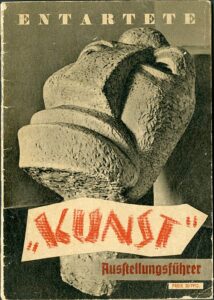

There is a tiny room in Chicago that everyone wants to enter. Thousands of artists are trying to break into a space that only has room for ten. Competition exists wherever there is an excess demand for resources and opportunities. The problem in the art world is that certain
types of competition are artificially eliminated. Artists compete to be seen but institutions do not, and these institutions try their best to maintain their monopoly. Four years ago, the NEXT Chicago art fair was disintegrated and succeeded by Art Expo. NEXT Chicago featured many innovative up-and-coming artists, but the smaller galleries representing them siphoned revenue from established galleries who sought a more exclusive space. Some of the established galleries split the community in order to gain more sway in the market and migrated to Art Expo.
They brought with them the original founders of NEXT Chicago. Smaller establishments trying to exist outside of the mainstream art world today struggle to gain traction because those with the influence to help them do so are absorbed into the system.
It’s difficult to disturb an establishment that many are invested in. At the same time, most people feel insecure within it: this includes artists, art personnel, art faculty, and gallery owners alike. People fear being kicked out should they do anything to upset the status quo. This has costs for the art community. To draw an analogy from another time and place: In imperial China, an official’s career depended heavily upon his loyalty to the central government, so he prioritized maintaining governmental connections over solving local problems. This was the result of sending bureaucrats to foreign provinces where they couldn’t rally locals to oppose the central government.
Because loyalty to the system was the only way to maintain their position, officials who tried to implement radical change in the lands they
governed didn’t last very long. The alienation of bureaucrats from their areas of governance was intended to create central political stability, but resulted in a government that often became blind to local problems and needed to be periodically overthrown. Corruption kept returning because the system it existed within was broken.
Having grown up within both a Chinese and American culture, I learned that each community has its own set of values, and these values influence its decisions. I developed the ability to think from multiple viewpoints and to connect ideas rather than arguing with politics.
But a crucial component to connecting ideas is being able to unveil the decision-making behind them. The cultural and political milieu we live in inform the works we produce. In the context of the art world, the story of how a piece of work ends up on the wall says as much about the art as the subject of the work itself. Professor David J. O’Brien, instructor of Romantic Art at the University of Illinois Urbana
Champaign, once told our class that until the Romantic period, people thought of art as being a mirror—imitating life. Then towards the end
of the 18th century, they began to view art as being more akin to a lantern. I think it is both; Art reflects our world, while understanding how it is made illuminates our understanding of the world we live in. For real conversations to exist about the art world, transparency needs to exist. I hope we can write to generate honest dialogue. By the time this is published, we will have reached out to local galleries, artists, and museums to talk about the current Chicago art world, on behalf of the New Art Examiner.
Jane Addams, founder of the Hull House and great-great aunt of Jane Addams Allen (co-founder of the NAE) brought people from different
communities together, uniting them through dialogue as a path to mutual understanding and ultimately, progress. This is my hope for what the New Art Examiner will begin to accomplish.
Feier Lai
Volume 31 number 2, November / December 2016 p 6

